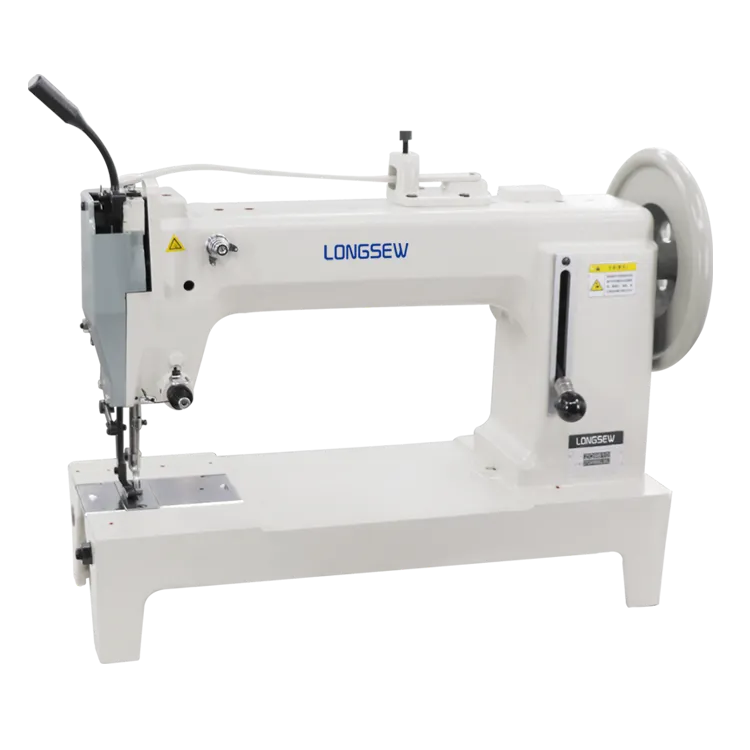Revolutionizing Manufacturing with High-Efficiency Automatic Industrial Sewing Machines for Enhanced Productivity
The Rise of Automatic Sewing Machines in the Industrial Sector
In recent years, the landscape of the textile and garment industry has undergone a significant transformation, largely driven by advancements in technology. One of the most impactful innovations is the automatic sewing machine. These machines have revolutionized the way garments are produced, offering increased efficiency, precision, and cost-effectiveness. This article explores the importance of automatic sewing machines in industrial settings, highlighting their advantages, applications, and future potential.
Enhanced Efficiency
At the heart of the industrial sewing process is the need for efficiency. Automatic sewing machines are designed to perform repetitive tasks at a speed that far surpasses that of manual sewing. With capabilities to sew multiple layers of fabric simultaneously and execute intricate stitch patterns with precision, these machines dramatically cut down production time. In an industry where time is money, the ability to produce garments faster without compromising quality is a game changer. Factories that implement automatic sewing technology can meet high demand and stay competitive in a global market.
Precision and Consistency
One of the notable features of automatic sewing machines is their ability to maintain high levels of precision and consistency across large production runs. Traditional sewing methods are often dependent on the skills of individual operators, leading to variations in stitching quality. Automatic machines, on the other hand, utilize computer-controlled mechanisms that ensure each stitch is uniform, reducing the likelihood of errors. This consistency is crucial for brand reputation, as consumers expect a high standard of quality. In industries like fashion and apparel, where aesthetic appeal is paramount, the role of automatic sewing machines cannot be overstated.
Cost-Effectiveness
While the initial investment in automatic sewing machines may be substantial, the long-term cost savings are significant. These machines reduce labor costs as fewer operators are needed to achieve the same output. Additionally, the speed and efficiency of automatic machines lead to quicker turnaround times, which translates to faster deliveries and improved cash flow for businesses. Furthermore, automatic sewing machines minimize fabric waste through precise cutting and stitching, contributing to more sustainable production processes.
automatic sewing machine industrial

Versatility and Customization
Modern automatic sewing machines are not just limited to basic stitching. They are equipped with advanced features that allow for a wide range of functions, including embroidery, buttonholing, and overlocking. This versatility enables manufacturers to explore various styles and designs without the need for multiple machines. Additionally, many automatic sewing systems can be programmed for customization, allowing for personalized products in response to consumer demand. This adaptability is particularly beneficial in today's fast-paced fashion industry, where trends can change rapidly.
The Future of Automatic Sewing Machines
As technology continues to evolve, so too will the capabilities of automatic sewing machines. The integration of artificial intelligence and machine learning will enable these machines to analyze production data, optimize workflows, and even predict maintenance needs. Innovations like these promise to further enhance productivity and efficiency in the industry.
Moreover, with growing concerns about sustainability, the development of eco-friendly sewing machines that reduce energy consumption and waste is on the rise. This trend aligns with the broader push towards sustainable fashion, making automatic sewing machines not just a technological advancement but also a critical component of responsible manufacturing practices.
Conclusion
The advent of automatic sewing machines marks a pivotal point in the industrial textile sector. By enhancing efficiency, precision, and cost-effectiveness, these machines are reshaping production processes and fostering innovation. As the industry continues to adapt to changing consumer demands and technological advancements, automatic sewing machines will undoubtedly play a crucial role in defining the future of garment manufacturing. Embracing this technology is essential for companies seeking to thrive in an increasingly competitive landscape.
-
Industrial Cylinder Arm Sewing Machine: Revolutionizing Heavy-Duty SewingNewsJul.28,2025
-
Cylinder Arm Sewing Machine: Perfect for Special Sewing ApplicationsNewsJul.28,2025
-
Cylinder Bed Sewing Machine: Essential for Sewing Complex MaterialsNewsJul.28,2025
-
Heavy Duty Sewing Machine: The Essential Tool for Industrial ApplicationsNewsJul.28,2025
-
Computerized Pattern Sewing Machine: Revolutionizing Precision StitchingNewsJul.28,2025
-
Heavy Duty Industrial Sewing Machine: Power Meets PrecisionNewsJul.28,2025
-
Leather Sewing Machine: The Industrial Standard for Tough MaterialsNewsJul.18,2025





























